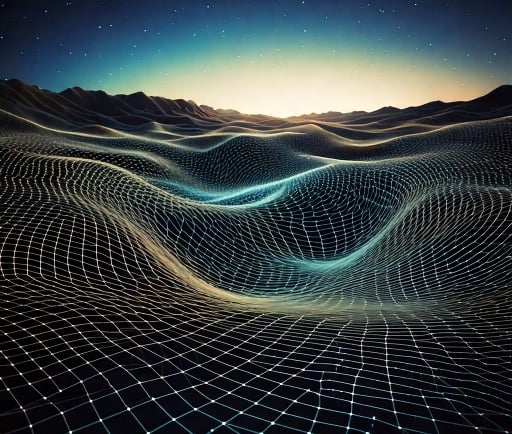Ensuing Gravitational Waves: The Ripples in Spacetime


Introduction to Gravitational Waves
Gravitational waves have fascinated scientists and enthusiasts alike, representing a groundbreaking phenomenon in the realm of astrophysics. These ripples in spacetime are produced by massive accelerating objects, unveiling secrets of the universe that were previously beyond our grasp. As we delve deeper into the fabric of spacetime, we unravel the mysteries of the cosmos.
What Are Gravitational Waves?
Gravitational waves can be understood as the vibrations or disturbances that traverse through the fabric of spacetime caused by the movement of massive celestial bodies. When objects such as neutron stars or black holes collide, they generate waves that propagate at the speed of light. This phenomenon was first predicted by Albert Einstein in 1916 as a part of his General Theory of Relativity, but it wasn’t until a century later that these waves were first directly detected.
The Significance of Gravitational Waves in Astronomy
The detection of gravitational waves marks a pivotal moment in the field of astronomy, providing a novel way to observe the universe. Traditionally, scientists relied on electromagnetic radiation—such as light and radio waves—to study celestial events. However, gravitational waves offer a complementary avenue for understanding some of the most explosive and enigmatic phenomena in the universe. For example, they provide insights into the processes surrounding black hole mergers, neutron star collisions, and even the early moments of the Big Bang.
By analyzing gravitational waves, researchers can extract information about the masses and distances of these massive objects, illuminating aspects of the universe that light alone cannot reveal. As gravitational wave astronomy evolves, it holds the potential to answer profound questions about the nature of spacetime and the fundamental forces that shape our universe.
Future Prospects of Gravitational Wave Research
The future of gravitational wave detection is bright, with advancements in technology leading to more sensitive instruments. Projects such as the Laser Interferometer Space Antenna (LISA) aim to extend our reach into the cosmos, enabling us to detect and study waves from further distances and more complex sources. As our capability to measure these faint signatures improves, we can anticipate not only deeper understanding of known astrophysical events but also the discovery of new phenomena that challenge our current understanding of physics.
In conclusion, gravitational waves represent a significant frontier in modern astrophysics. As ripples traverse the vast universe, they carry with them information about the dynamic processes of celestial bodies. Continued research in this field not only enriches our understanding of phenomena such as black holes and neutron stars but also opens doors to the mysteries of the cosmos that lie beyond our current observations.
